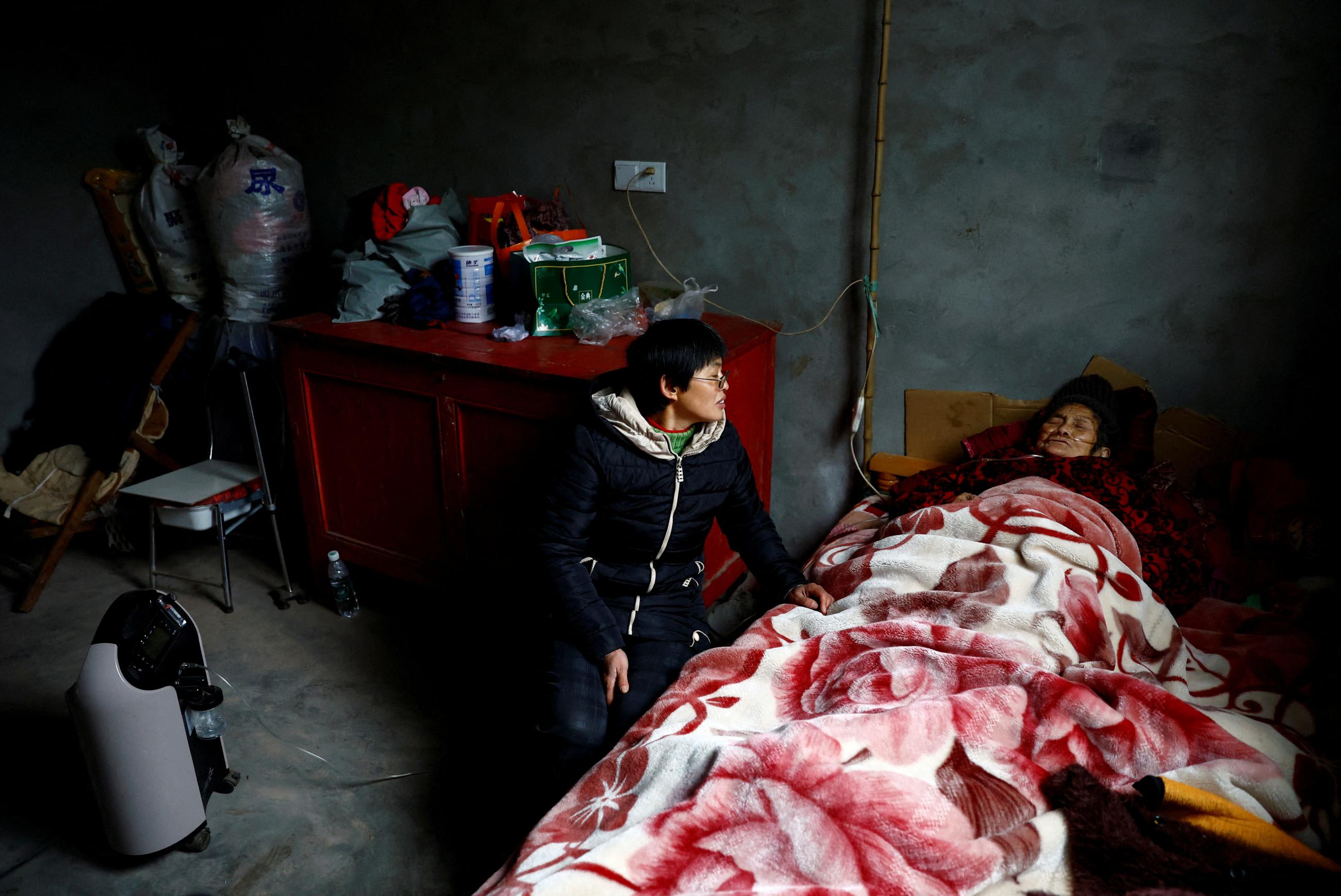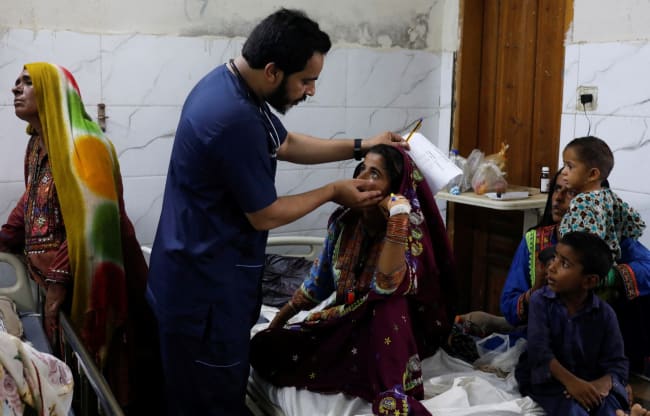The history of global health spending—specifically, pandemic prevention spending—is marked by cycles of panic and neglect. As a World Bank report stated in 2017 (just two years before COVID-19), "for far too long, our approach to pandemics has been one of panic and neglect: throwing money and resources at the problem when a serious outbreak occurs; then neglecting to fund preparedness when the news headlines move on."
So it went with COVID-19. Prior to the pandemic, the global community neglected to devote sufficient resources to pandemic preparedness systems and activities, and then COVID-19 led to a massive increase in (largely emergency) health spending. Had the world been better prepared, the COVID-19 pandemic might not have taken such a tragic toll.
New health spending estimates from the Institute for Health Metrics and Evaluation (IHME) show that between 1990 and 2021 an estimated $6.5 billion was directed toward development assistance for health (DAH) for pandemic preparedness. To put this in context, this is less than one cent out of every dollar spent on DAH during this period.
Development Assistance for Health for Pandemic Preparedness, 1990-2021
The $6.5 billion that has been contributed to pandemic preparedness over the past thirty years may sound like a lot, especially considering that no one knew when (or if) a pandemic might arrive. But the money that was allocated for pandemic preparedness is just a small fraction of the tens of trillions that COVID-19 has cost the world. Indeed, one study estimated that the pandemic's impact on the United States alone was $16 trillion. COVID-19 might have cost the world much less in economic and health terms if additional resources had been devoted to preparing for and mitigating the pandemic.
Global Health Suffers When Funding Is Based on Panic and Neglect
An additional finding of our work is how spending volatility occurred across health areas between 1990 and 2021. In particular, DAH for tuberculosis, malaria, reproductive and maternal health, newborn and child health, and non-communicable diseases dipped or fluctuated between 2019 and 2021. As pointed out in our first story, the pandemic led to an overall increase in DAH for several health issues. Increases in spending, however, weren't universal across the areas we track.
Total Development Assistance for Health for Select Health Areas
For example, during the two years leading up to COVID-19 (2018–2019), a total of $4.7 billion was allocated to DAH for malaria. During the COVID-19 period (2020–2021), there was $4.6 billion allocated for malaria DAH, a reduction of 3.5 percent. Reproductive and maternal health DAH decreased 7.5 percent between the two years before COVID-19 and the COVID-19 period.
As a paper by Melisa Martínez Álvarez and Arnab Acharya notes, unpredictable levels of aid can "hinder aid effectiveness in several ways," from making budget planning difficult for recipient governments to making finance ministries wary of long-term health spending commitments. Put simply, it's difficult to make long-term plans when the money may not be there.
There are also the human costs of inconsistent investments in health. The people that spending is designed to support could receive less help when funding levels dip, affecting health outcomes. For reference, malaria and non-communicable diseases caused millions of deaths in 2019, according to the Global Burden of Disease (GBD) study, led by IHME. There were an estimated 643,000 deaths from malaria, and more than 42 million deaths from the non-communicable diseases group, which includes conditions like ischemic heart disease (more than 9 million deaths) and stroke (over 6.5 million deaths).
"COVID left the global South in critical condition, and so cutting aid now is like pulling the oxygen supply for them," Louis Belanger, of the Canadian group Bigger than Our Borders, told the Canadian Press. "It would be the worst time to cut foreign aid. It would be the worst time to go backwards, when there's so much need."
"It would be the worst time to cut foreign aid. It would be the worst time to go backwards, when there's so much need"
Louis Belanger, Bigger than Our Borders
As noted, unpredictable spending can also complicate the achievement of long-term goals, including the United Nations Sustainable Development Goals (SDGs). SDG 3, for example, seeks to "ensure healthy lives and promote well-being for all at all ages," and several of its targets correspond to areas that saw reductions in DAH during the COVID-19 period.
Preliminary data suggests that development spending to support reproductive and maternal health declined during the COVID-19 period. Meanwhile, the GBD projects that the global maternal mortality ratio will be 125 deaths per 100,000 live births in 2030. These projections suggest that global community isn't on track to achieve SDG 3.1, which aims to reduce the global maternal mortality ratio to less than 70 deaths per 100,000 live births, any time soon.
The Way Forward
Considering the enormous cost of playing "catch-up" in funding pandemic preparedness, it makes sense to look at the lessons the pandemic has taught the world. So, what's to be done?
To start, pandemic preparedness measures and programs should be robustly funded. For its part, the G20 High Level Independent Panel (HLIP) on pandemic preparedness recommends donors increase spending on pandemic preparedness by an additional $75 billion (or 11.3 percent more than our 2021 estimate of total DAH, $67.4 billion) over the next five years.
The HLIP also recommends that national governments "step up domestic investments in the core capacities needed to prevent and contain future pandemics," which for low- and middle-income countries could mean adding 1 percent of their GDP to their health budgets—not a small feat.
To further challenge planners, allocating money to pandemic preparedness, but not spending it in ways that makes the world more prepared for the next pandemic, isn't going to help—no matter how much money is spent.
Research based on cross-country comparisons of COVID-19 outcomes (whose authors include IHME's Joseph Dieleman and Erin Hulland, as well as the Council on Foreign Relations' Thomas Bollyky) showed traditional measures of pandemic preparedness (such as health-care capacity) haven't been meaningfully tied to COVID outcomes. Instead, factors like trust in government were more closely aligned to COVID-19 infections and vaccine uptake.
Moving forward, the global health community should act upon lessons learned from COVID-19. Cycling from neglect to panic and back again, ad infinitum, is no way to manage global health spending. Critically, the global community should work together, to coordinate care (COVID-19 re-demonstrated how interconnected and interdependent the globe is), to smooth spending as much as possible, and to ensure investments in pandemic preparedness are focused on planning that is actionable and can be deployed to save lives.
This is the second installment in a two-part series based on new estimates. Read part one here.

ACKNOWLEDGMENTS: The authors would like to thank IHME's Juan Solorio for his inestimable help with the figures and estimates throughout.
EDITOR'S NOTE: The authors are employed by the University of Washington's Institute for Health Metrics and Evaluation (IHME), which leads the development assistance for health research described in this article. IHME collaborates with the Council on Foreign Relations on Think Global Health. All statements and views expressed in this article are solely those of the individual authors and are not necessarily shared by their institution.












